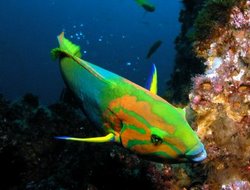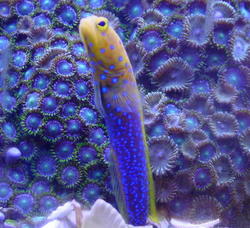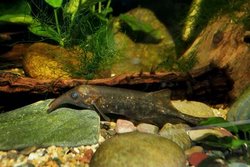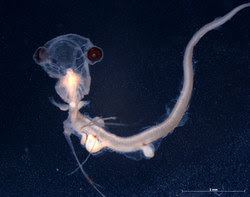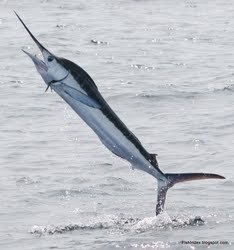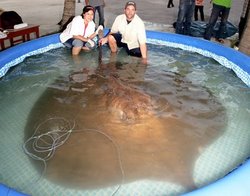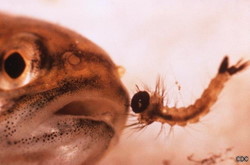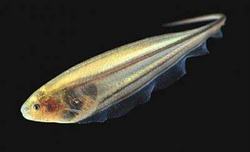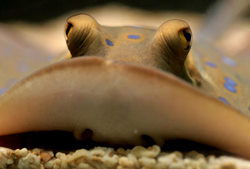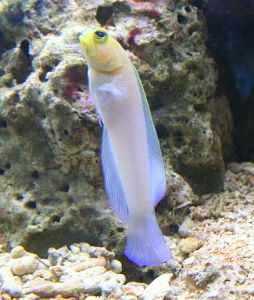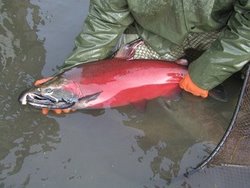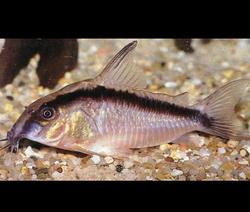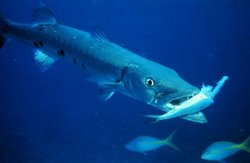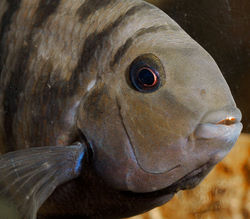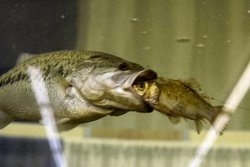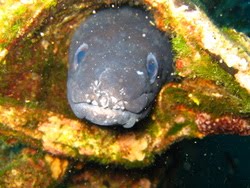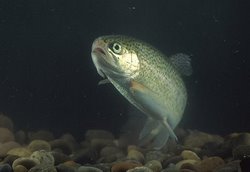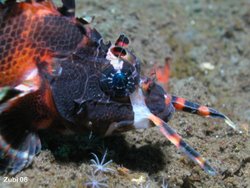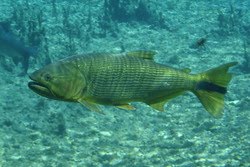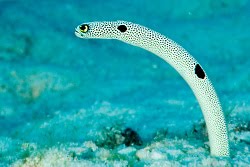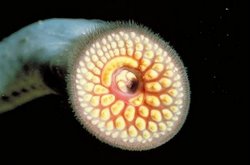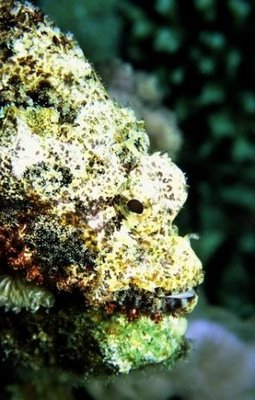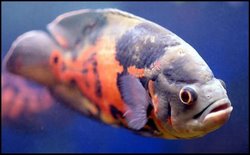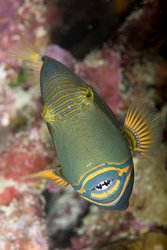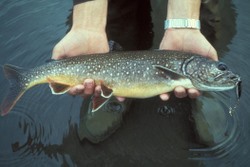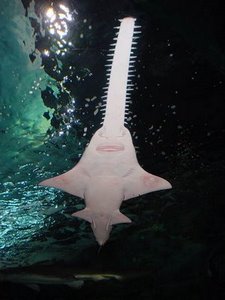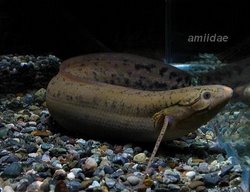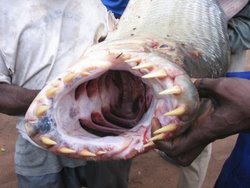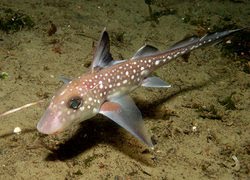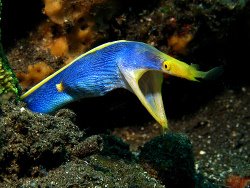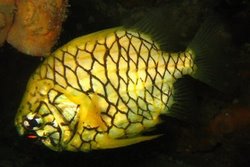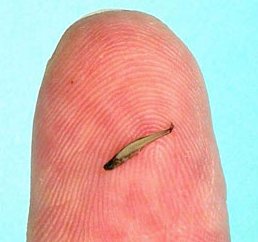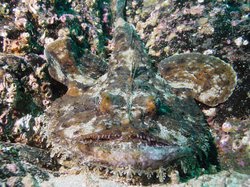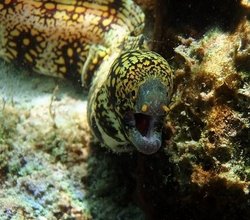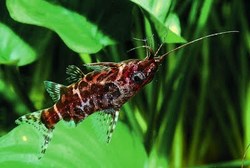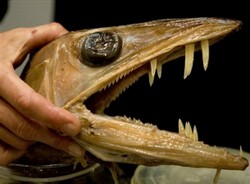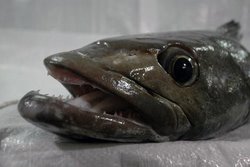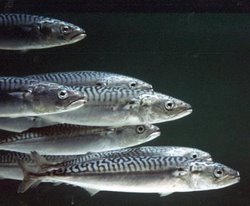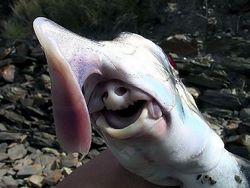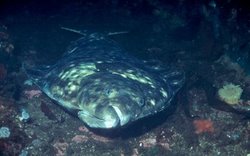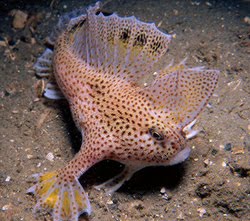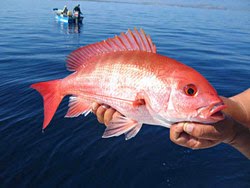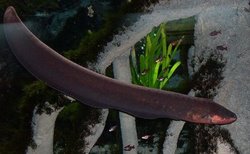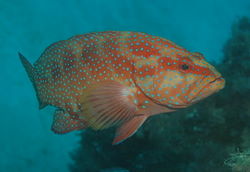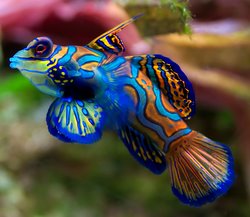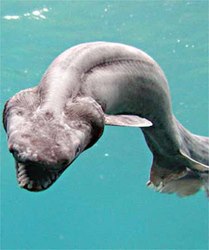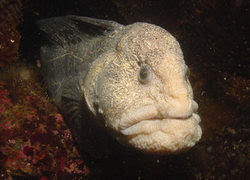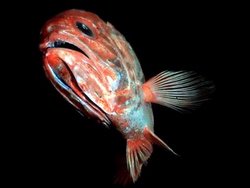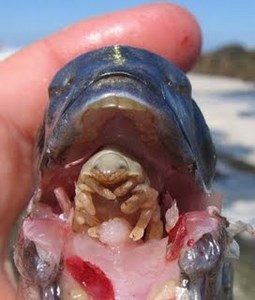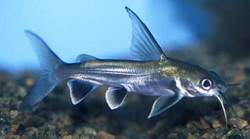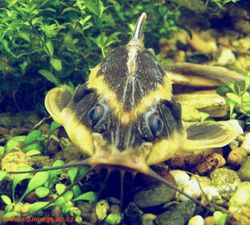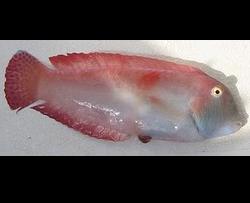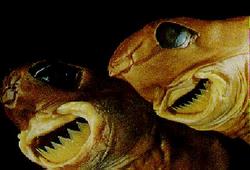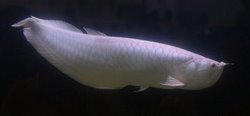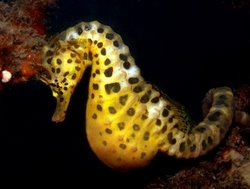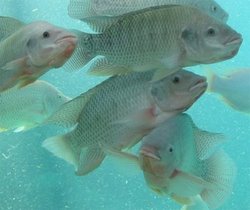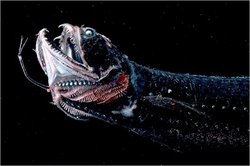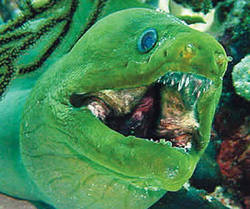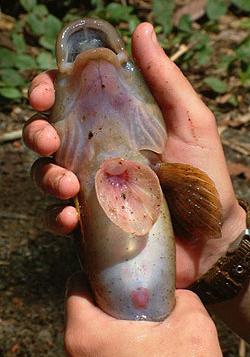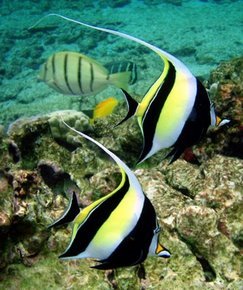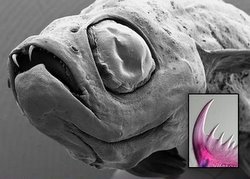 The Red Diana Hogfish or Bodianus diana is an odd looking fish that can be kept in an aquarium setting, but can be rather aggressive, and should not be housed with docile fish. They have a red body with white spots and white lines on their faces. Their tails and fins have black spots that could almost be considered a series of eye spots. All this makes for one beautiful fish! You can check out a young Red Diana Hogfish underwater in the video below...
The Red Diana Hogfish or Bodianus diana is an odd looking fish that can be kept in an aquarium setting, but can be rather aggressive, and should not be housed with docile fish. They have a red body with white spots and white lines on their faces. Their tails and fins have black spots that could almost be considered a series of eye spots. All this makes for one beautiful fish! You can check out a young Red Diana Hogfish underwater in the video below...Red Diana Hogfish go by a few different names including the Spotted Hogfish and Diana Hogfish and are just one of the many different species of Hogfish. These saltwater fish are from the Labridae family and are not particular large, only growing to about 10" in length. They originate from the Indo-Pacific, but have since become quite popular as pets. When they are young they are often seen picking parasites off of larger fish. As you can see in the picture below their coloration changes quite a bit as they mature.
If you are thinking of keeping the Red Diana Hogfish in your aquarium you should note that they are not reef compatible, and require the following water conditions in a tank of 60 gallons or more, 72-78° F, dKH 8-12, pH 8.1-8.4 and sg 1.020-1.025. These fish are carnivores that require a meaty diet including small feeder fish, worms, mussels and snails. As with many other species of fish, providing plenty of hiding spots keeps this fish happy and healthy.







